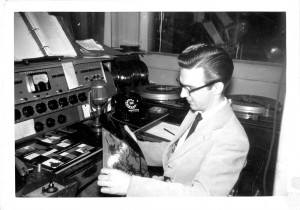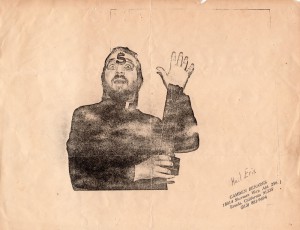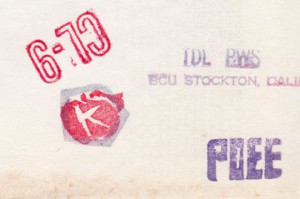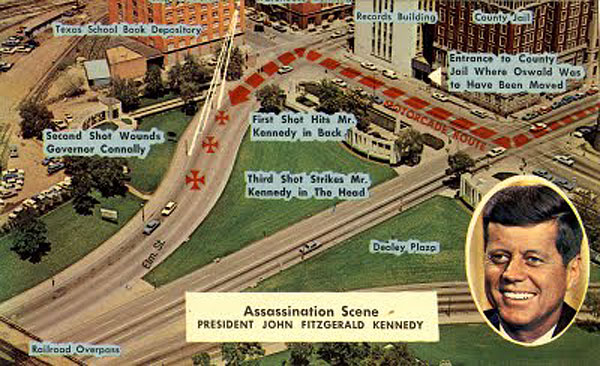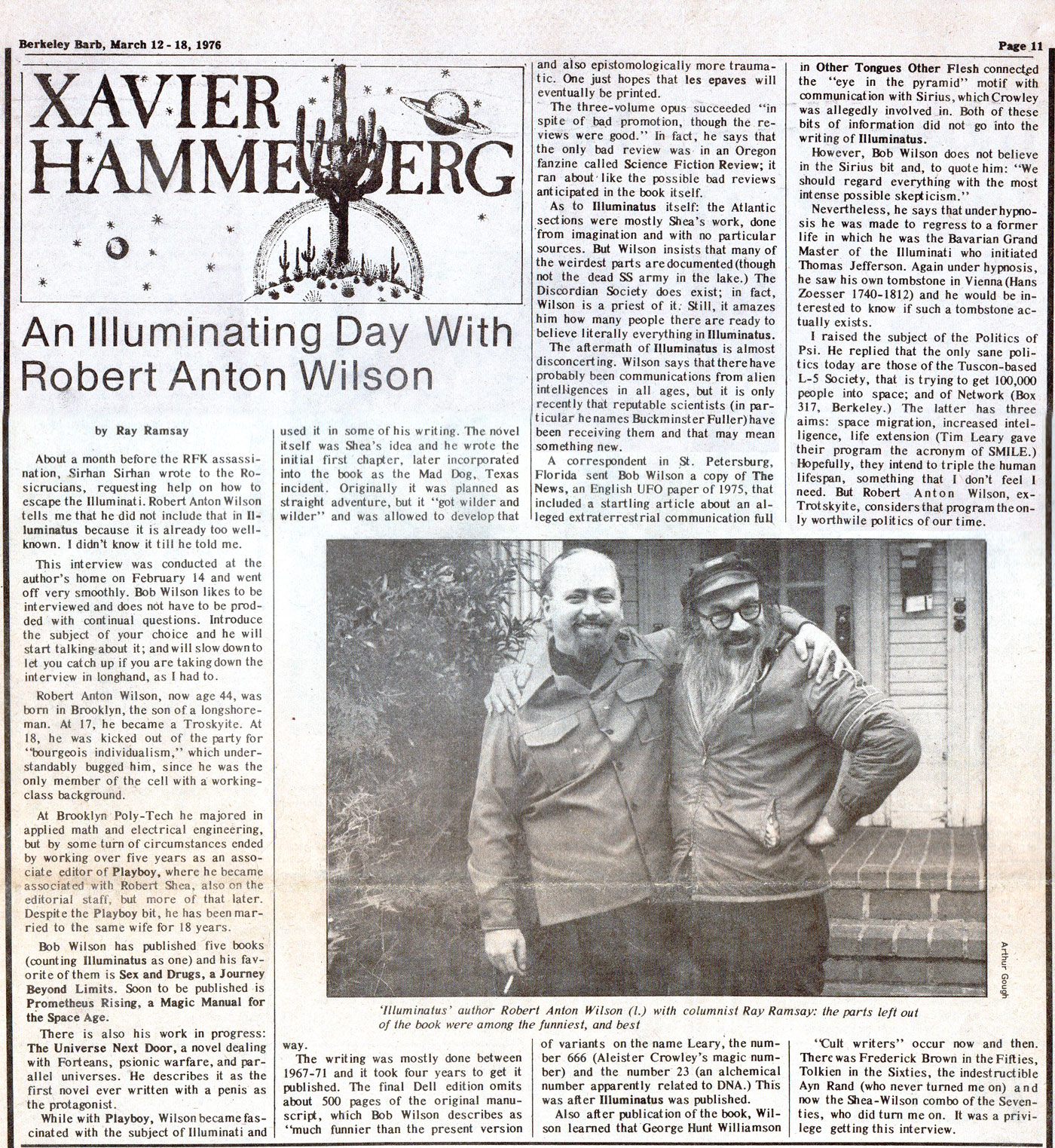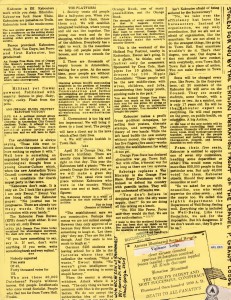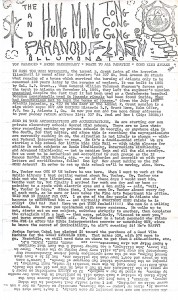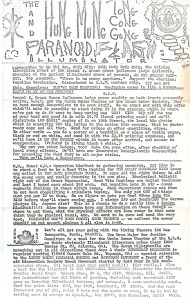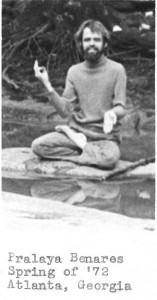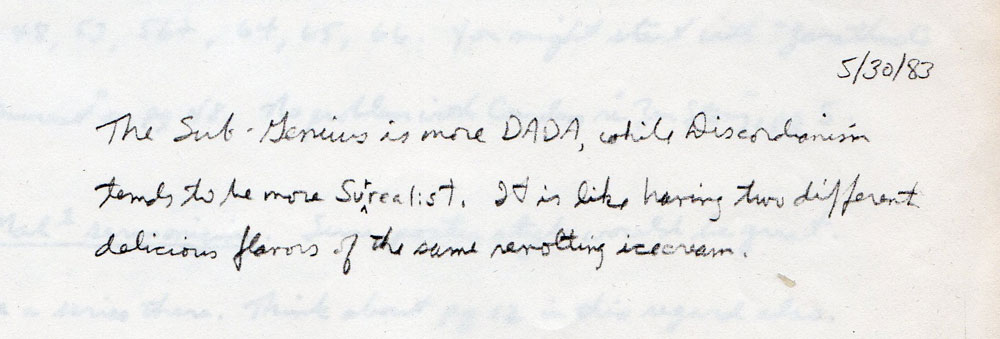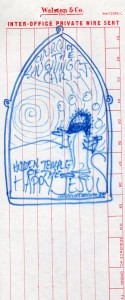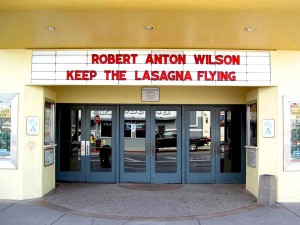
At the time, Louise Lacey was visiting Santa Cruz, so on the way I picked her up and gave her a lift to the event, which was located right off the Santa Cruz Beach Boardwalk where I’d spent so many days of my youth and teenage years. So it was nostalgic in that sense, conjuring up memories of days gone by, and also a sense of fond nostalgia about RAW’s influence on all of us Discordians attending the event. In many ways this day signaled the end of an era, although those in the crowd did not dwell on the maudlin, but to the contrary came and celebrated and laughed and lifted a glass (or two) to RAW’s passing into the land of We Know Not What.
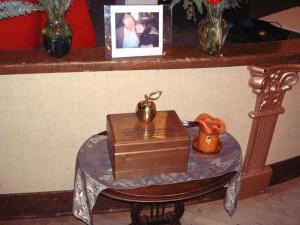
Courtesy of Tim Cridland.
During the Meme-Orial, many took to the stage with their RAW remembrances, including his daughter, Christina, who shared his last message:
“I no longer claim to know anything, but I still have some persistent suspicions. My greatest suspicion holds that all my suspicions may prove wrong. Intelligence recognizes that nothing now seems impossible. Have a good, hearty laugh and do not dare to mourn me.”

Courtesy of Tim Cridland.
To this end, Greg recalled how his life was literally saved when—during a period of deep depression—he fortunately discovered RAW’s writings about the loser and winner scripts, and immediately took them to head and heart, turning his world around.
Synchronicities were often abundant during personal interactions with RAW, as Kenn Thomas recalled:
“The twenty-three coincidences came up twice when RAW visited me in St. Louis way back in 1978. We were talking about it at lunch one day when the number we were given at the pizza place to wait for our order was 2323. Later, I took him to a radio interview in the nearby burb of Clayton, MO—near where George Noory does his show these days—and I pointed out that the name of the building where the radio station was located must have some mystical significance. It was called the Sevens Building. “Maybe,” he said, “and maybe so does that” and he pointed the top of the tall building across the street which had a large “23” marking its street address. RAW tells some version of this story on one of his videos, saying that the incident reflected a koan ‘Who is the Master who makes the grass green?’”
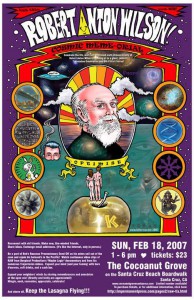
The next RAW initiate I encountered was his long time friend, Scott Apel, who spent a lot of time with Bob during his final days. Scott mentioned that, at one point, RAW had handed him a copy of The Prankster and The Conspiracy and said, “If you want to know what really happened with the early Discordian scene, read this book!”—which was a wonderful anecdote to hear.
There are some very cool clips from the RAW Meme-Orial at this YouTube playlist:

Courtesy of Tim Cridland.
LASAGNA
FLYING!


